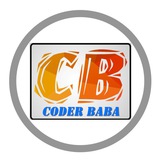Unboxing Zebronics Zeb Wonderbar 10 Best Budget Speaker
https://youtu.be/w5BCjqH2s7A
https://youtu.be/w5BCjqH2s7A
-: What is the difference between array, array list and list in c# :-
They are different object types. They have different capabilities and store their data in different ways.
Array:
An Array (System.Array) is fixed in size once it is allocated. You can't add items to it or remove items from it. Also, all the elements must be the same type. As a result, it is type safe, and is also the most efficient of the three, both in terms of memory and performance. Also, System.Array supports multiple dimensions (i.e. it has a Rank property) while List and ArrayList do not (although you can create a List of Lists or an ArrayList of ArrayLists, if you want to).
ArrayList:
An ArrayList is a flexible array which contains a list of objects. You can add and remove items from it and it automatically deals with allocating space. If you store value types in it, they are boxed and unboxed, which can be a bit inefficient. Also, it is not type-safe.
List<>:
A List<> leverages generics; it is essentially a type-safe version of ArrayList. This means there is no boxing or unboxing (which improves performance) and if you attempt to add an item of the wrong type it'll generate a compile-time error.
follow @coder_baba
They are different object types. They have different capabilities and store their data in different ways.
Array:
An Array (System.Array) is fixed in size once it is allocated. You can't add items to it or remove items from it. Also, all the elements must be the same type. As a result, it is type safe, and is also the most efficient of the three, both in terms of memory and performance. Also, System.Array supports multiple dimensions (i.e. it has a Rank property) while List and ArrayList do not (although you can create a List of Lists or an ArrayList of ArrayLists, if you want to).
ArrayList:
An ArrayList is a flexible array which contains a list of objects. You can add and remove items from it and it automatically deals with allocating space. If you store value types in it, they are boxed and unboxed, which can be a bit inefficient. Also, it is not type-safe.
List<>:
A List<> leverages generics; it is essentially a type-safe version of ArrayList. This means there is no boxing or unboxing (which improves performance) and if you attempt to add an item of the wrong type it'll generate a compile-time error.
follow @coder_baba
Basics of SOLID design principles using C# and .NET.
Intro to SOLID principles
SOLID principles are the design principles that enable us to manage most of the software design problems. Robert C. Martin compiled these principles in the 1990s. These principles provide us with ways to move from tightly coupled code and little encapsulation to the desired results of loosely coupled and encapsulated real needs of a business properly.
SOLID is an acronym of the following.
S:👉 Single Responsibility Principle (SRP)
O:👉 Open closed Principle (OCP)
L: 👉Liskov substitution Principle (LSP)
I:👉 Interface Segregation Principle (ISP)
D:👉 Dependency Inversion Principle (DIP)
Intro to SOLID principles
SOLID principles are the design principles that enable us to manage most of the software design problems. Robert C. Martin compiled these principles in the 1990s. These principles provide us with ways to move from tightly coupled code and little encapsulation to the desired results of loosely coupled and encapsulated real needs of a business properly.
SOLID is an acronym of the following.
S:👉 Single Responsibility Principle (SRP)
O:👉 Open closed Principle (OCP)
L: 👉Liskov substitution Principle (LSP)
I:👉 Interface Segregation Principle (ISP)
D:👉 Dependency Inversion Principle (DIP)
COMPUTER ARCHITECTURE QUESTION ANSWER.pdf
609.3 KB
COMPUTER ARCHITECTURE QUESTION ANSWER
Difference_Between_Encapsulation_And_Abstraction_In_Object_Oriented.pdf
537.5 KB
Difference Between Encapsulation And Abstraction In Object Oriented Programming in C#
What is SQL?
It is a non-procedural language that is used to communicate with any database such as Oracle, SQL Server, etc.
This Language was developed by the German Scientist Mr. E.F.Codd in 1968
ANSI (American National Standard Institute) approved this concept and in 1972 SQL was released into the market
SQL is also called Sequel it stands for Structured English Query Language,
The sequel will provide a common language interface facility it means that a sequel is a language that can communicate with any type of database such as SQL Server, Oracle, MySQL, Sybase, BD2, etc.
SQL is not a case-sensitive language it means that all the commands of SQL are not case sensitive
Every command of SQL should end with a semicolon (;) (It is optional for SQL Server)
SQL can be called NLI (Natural Language Interface). It means that all the SQL Commands are almost similar to normal English language.
Subscribe My Youtube channel:
www.youtube.com/coderbaba
It is a non-procedural language that is used to communicate with any database such as Oracle, SQL Server, etc.
This Language was developed by the German Scientist Mr. E.F.Codd in 1968
ANSI (American National Standard Institute) approved this concept and in 1972 SQL was released into the market
SQL is also called Sequel it stands for Structured English Query Language,
The sequel will provide a common language interface facility it means that a sequel is a language that can communicate with any type of database such as SQL Server, Oracle, MySQL, Sybase, BD2, etc.
SQL is not a case-sensitive language it means that all the commands of SQL are not case sensitive
Every command of SQL should end with a semicolon (;) (It is optional for SQL Server)
SQL can be called NLI (Natural Language Interface). It means that all the SQL Commands are almost similar to normal English language.
Subscribe My Youtube channel:
www.youtube.com/coderbaba
